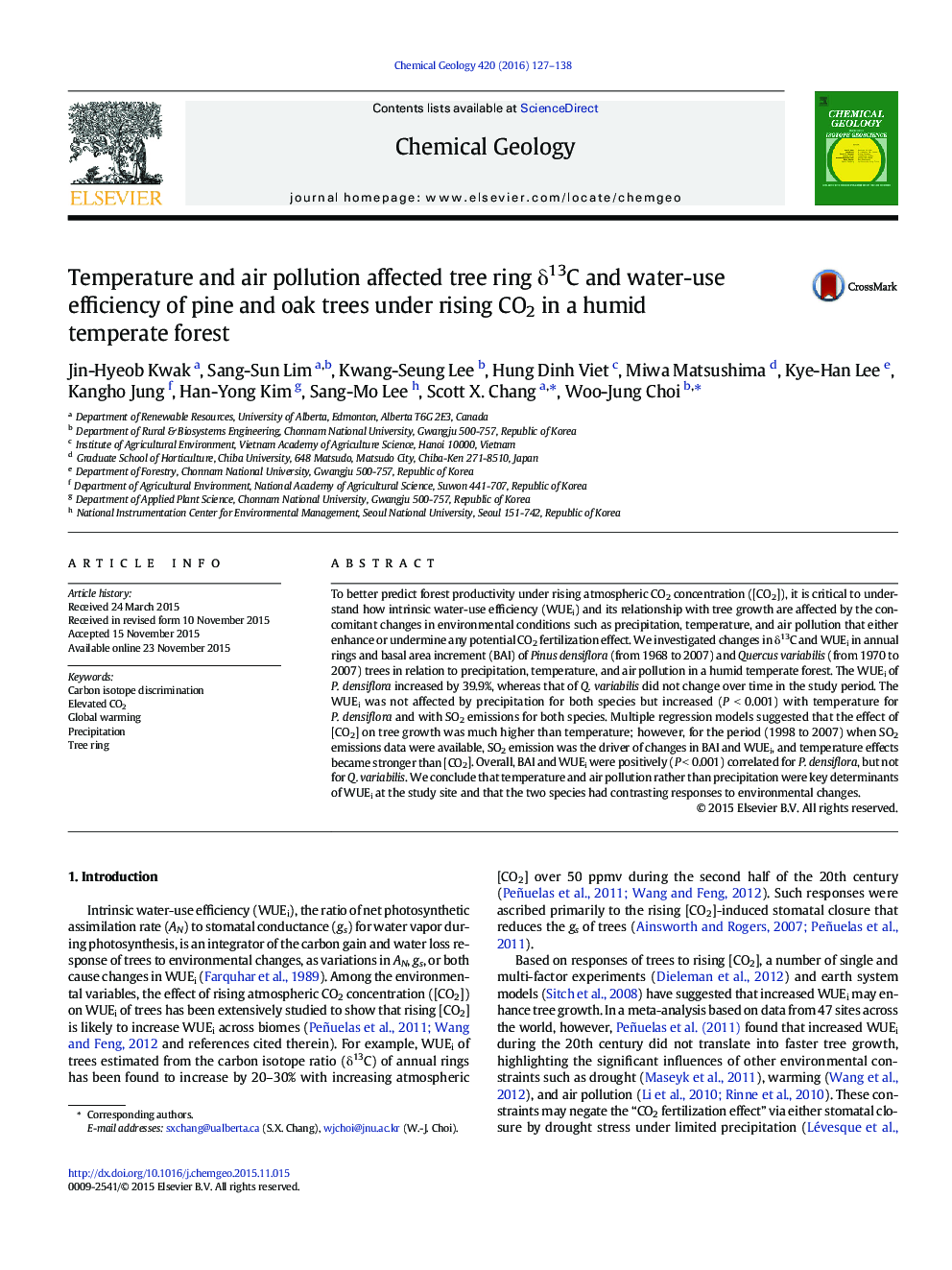| کد مقاله | کد نشریه | سال انتشار | مقاله انگلیسی | نسخه تمام متن |
|---|---|---|---|---|
| 4698354 | 1637554 | 2016 | 12 صفحه PDF | دانلود رایگان |

• Tree-ring δ13C of Pinus densiflora and Quercus variablis was investigated.
• Precipitation did not affect C isotope discrimination and water use efficiency.
• The two species showed distinct responses to warming with rising CO2.
• Increased water use efficiency translated to better tree growth for P. densiflora.
To better predict forest productivity under rising atmospheric CO2 concentration ([CO2]), it is critical to understand how intrinsic water-use efficiency (WUEi) and its relationship with tree growth are affected by the concomitant changes in environmental conditions such as precipitation, temperature, and air pollution that either enhance or undermine any potential CO2 fertilization effect. We investigated changes in δ13C and WUEi in annual rings and basal area increment (BAI) of Pinus densiflora (from 1968 to 2007) and Quercus variabilis (from 1970 to 2007) trees in relation to precipitation, temperature, and air pollution in a humid temperate forest. The WUEi of P. densiflora increased by 39.9%, whereas that of Q. variabilis did not change over time in the study period. The WUEi was not affected by precipitation for both species but increased (P < 0.001) with temperature for P. densiflora and with SO2 emissions for both species. Multiple regression models suggested that the effect of [CO2] on tree growth was much higher than temperature; however, for the period (1998 to 2007) when SO2 emissions data were available, SO2 emission was the driver of changes in BAI and WUEi, and temperature effects became stronger than [CO2]. Overall, BAI and WUEi were positively (P < 0.001) correlated for P. densiflora, but not for Q. variabilis. We conclude that temperature and air pollution rather than precipitation were key determinants of WUEi at the study site and that the two species had contrasting responses to environmental changes.
Journal: Chemical Geology - Volume 420, 20 January 2016, Pages 127–138